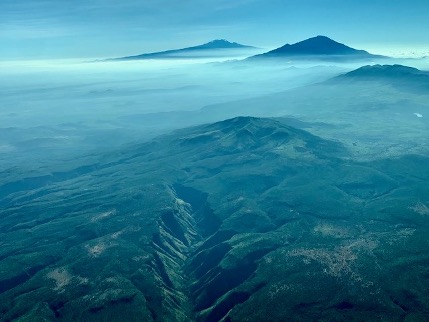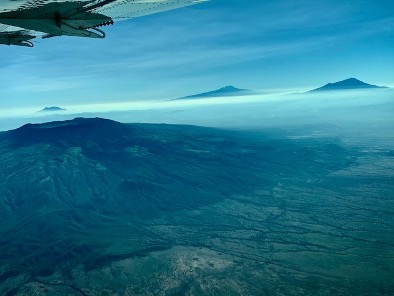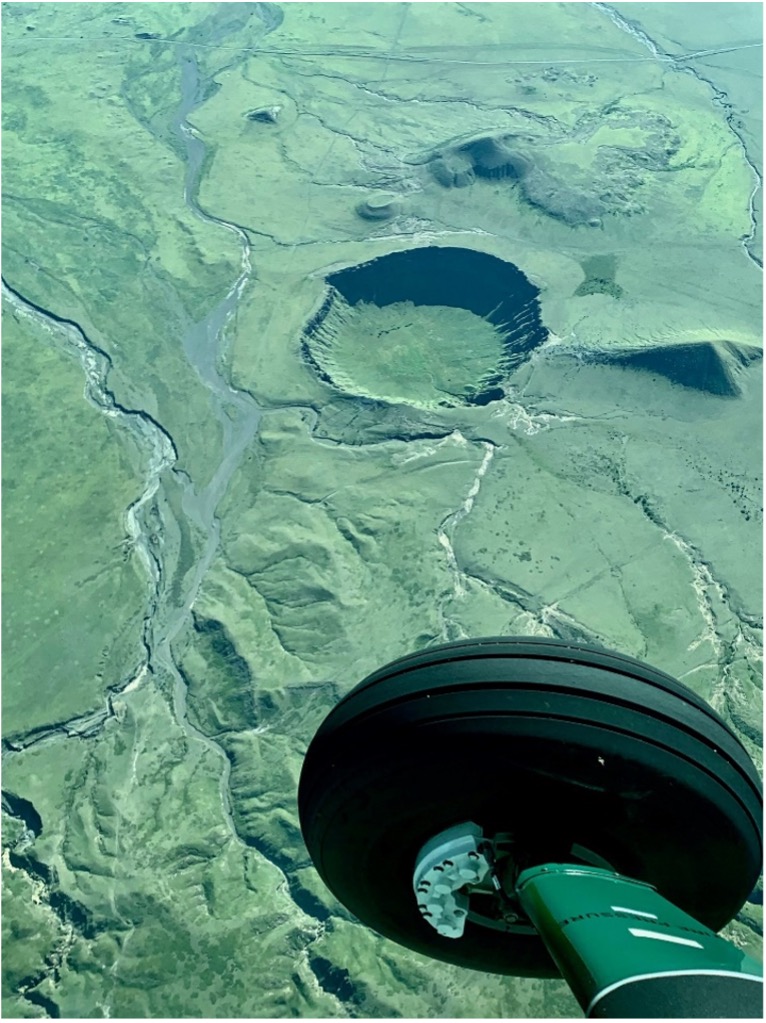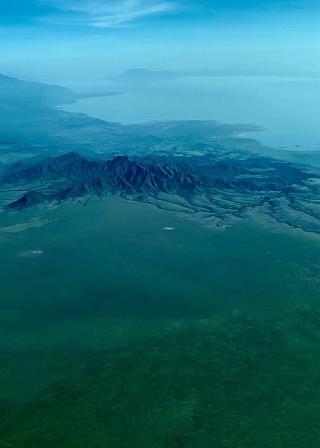March 2021
Eyes in the skies – The Great Rift Valley unfolded
Share:
Eyes in the skies – The Great Rift Valley unfolded
The safari has begun as you set foot upon the steps of the Grumeti Aircraft. Ambling on up the little stairwell, finding yourself a seat and making yourself comfortable for a truly incredible flight awaits, for the Great Rift Valley is moments away from unfolding before you in all its glory. Whatever you do, do not miss the incredible scenery from your window. If you thought that perhaps now was the time to put your head back, close your eyes and doze, you would be very wrong!
There is an incredible story to be told as you soar over some of the great freestanding mountains of the eastern rift, the incredible escarpments, the great rips, upheavals and craters in Mother Earth. These formations and the shape of the earth beneath you has been carved over millions of years and, interestingly enough, has a huge amount to do with the birth of the Serengeti and surrounding areas.
On taking off, we cut north west right between two of the most impressive mountains in East Africa. To the east Kilimanjaro and west to the beautiful Mt Meru. Both were active volcanoes many years ago. Mt Meru lies dormant whilst Kilimanjaro is now extinct. Look carefully down at the eastern slopes of Mt Meru and you will notice the lush, green forests home to incredible wildlife including the black and white colobus monkeys and incredible bird species!
Flying west, you can see how the earth has literally been pulling apart, creating impressive escarpments and mountains. Leaving Mt Meru and Kilimanjaro behind you to the east you will begin to notice other free standing mountains rising out of the shimmering blue horizon… Kitumbeine, Gelai, the infamous and very much active volcano Ol Doinyo Lengai, otherwise known as the Mountain of God. To the north you may see the great Lake Natron and if you’re lucky you might just see the pink wash of thousands of lesser flamingos congregating on the shores, as the lake is a very important breeding ground for these lovely birds.

This is the awesome view back east to the three mountain formations, Kilimanjaro at the very back, Mt Meru in the middle and Mt Monduli closest to the great scar in the earth on the edge of the rift valley.

This shows the wonderful flat-topped Mt Kitumbeine in the foreground and the peaks at the rear from left to right are Mt Longido, Mt Kilimanjaro and Mt Meru. The top of Kitumbeine is covered in montane forest harbouring many animal and bird species.

The incredible crater formations as you near the Mountain of God and the eastern Gregory Rift. The landscape seems to be dotted with these formations all over making for a pretty impressive seen.

The last photo shows the jagged mountains known as Mosonik and the beautiful Lake Natron behind. When you reach this point with lake Natron to your north and the Ngorongoro highlands to the south, the great Serengeti plains begin to unfold to the west.
As a result of the incredible volcanic activity, the Serengeti plains, as we know it today, became part of an incredible high altitude plateau with grasslands extending for miles and miles. Thanks to the volcanic activity of the Great Rift Valley there are many nutrients to be found in the soils of the Serengeti. This gives rise to endless grasses of high nutritional value. It is these grasses that sustain the great herds of ungulates that roam across the Grumeti and the Serengeti regions.
A remarkable story of a little trip on a light aircraft from Arusha to the Grumeti that in a way reveals an amazing amount of information as to how the Serengeti and Grumeti came to be what they are today.

By George David Tolchard
Head Guide